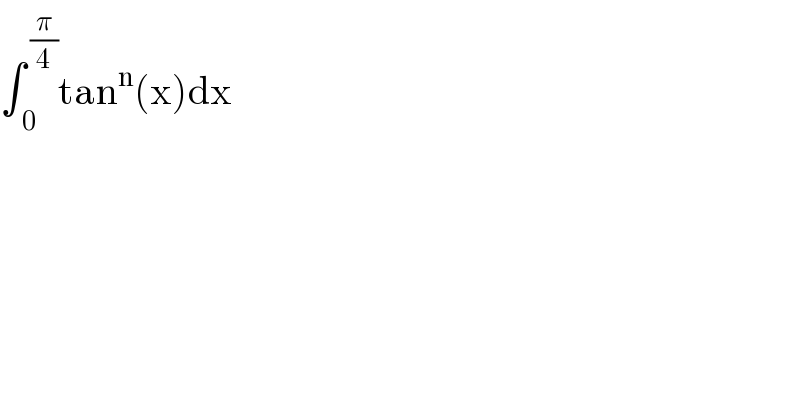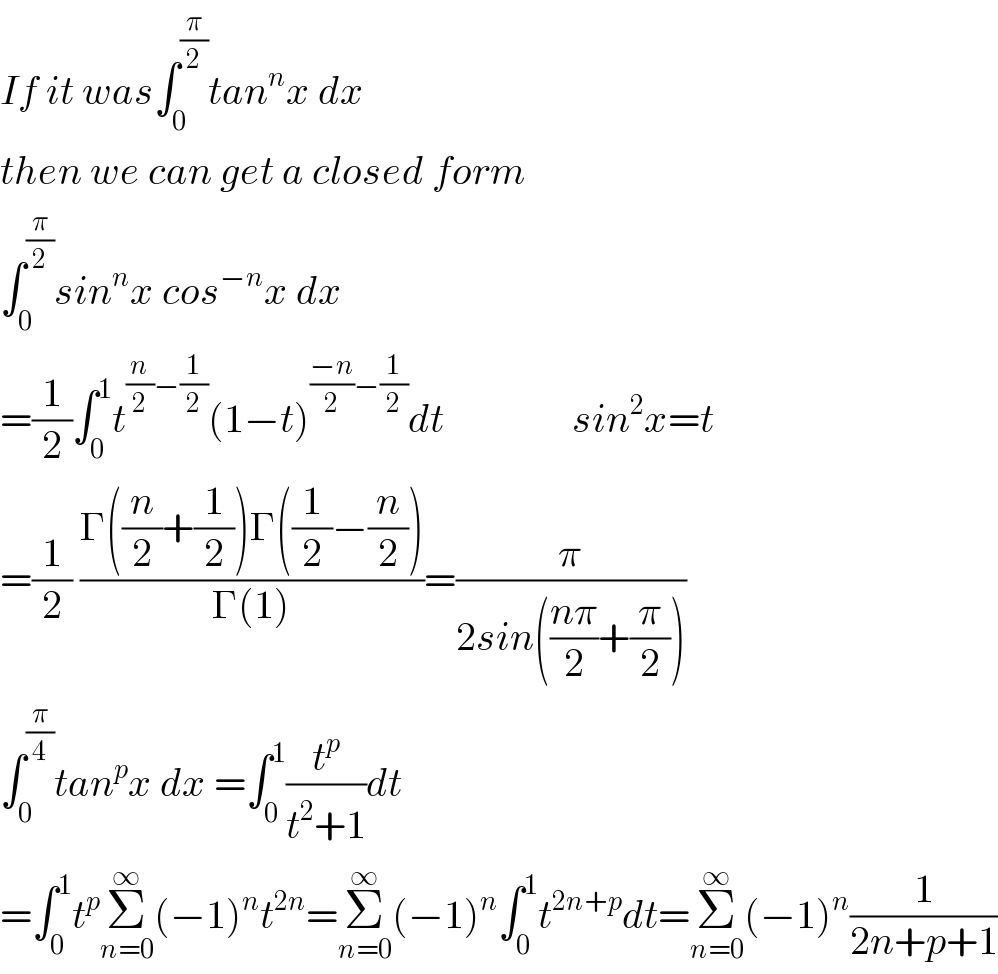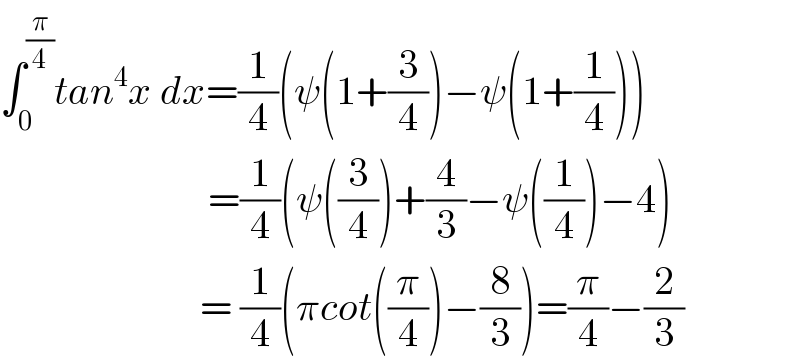
Question and Answers Forum
Question Number 123552 by Lordose last updated on 26/Nov/20

Answered by Adeleke last updated on 26/Nov/20

Answered by TANMAY PANACEA last updated on 26/Nov/20

Commented by peter frank last updated on 26/Nov/20

Answered by Dwaipayan Shikari last updated on 26/Nov/20

Answered by mnjuly1970 last updated on 26/Nov/20

Commented by Dwaipayan Shikari last updated on 26/Nov/20

Commented by Lordose last updated on 02/Dec/20

